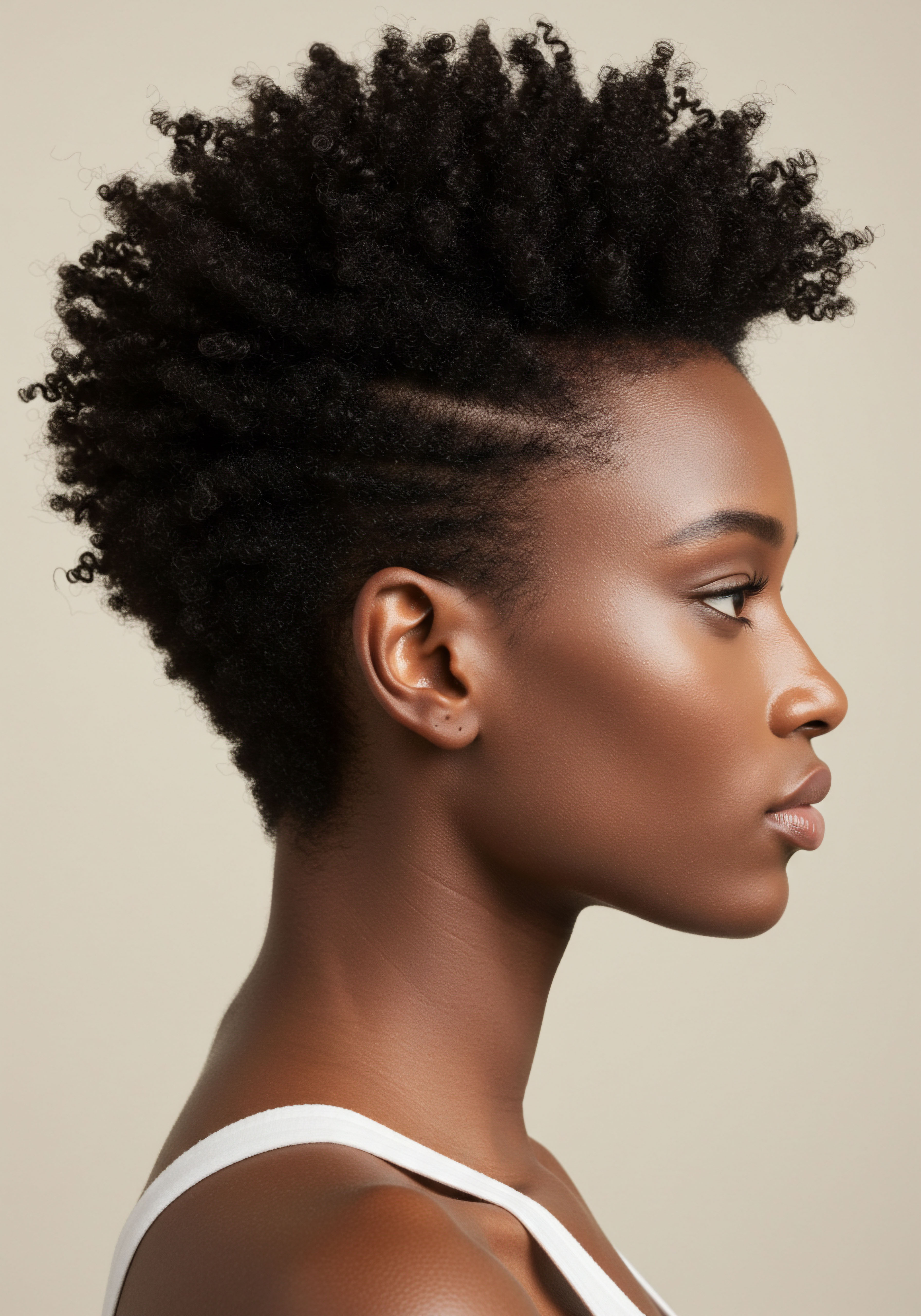
Roots
A quiet consideration settles upon us now, drawing our attention to the subtle, yet profound, gifts bestowed upon textured strands when night descends. The act of covering hair before sleep, far from a mere cosmetic whim, holds layers of wisdom, spanning centuries and continents. It is a practice deeply rooted in an understanding of hair’s inherent structure and its relationship with the world around it, a testament to enduring knowledge passed through generations. This nightly ritual, often performed with quiet reverence, safeguards the vitality of curls, coils, and waves, preparing them for the day ahead.
Our hair, particularly that which coils and kinks with beautiful complexity, possesses a unique architecture. The elliptical shape of its strands and the curved nature of its follicles render it more susceptible to forming knots and tangles when compared to straighter hair types. Moreover, textured hair often exhibits decreased water content and reduced sebaceous gland activity, which impedes the natural oils from migrating effectively down the hair shaft. This anatomical predisposition means textured hair frequently experiences dryness, making moisture retention a continuous, vital endeavor.
The nightly ritual of covering textured hair is a practice steeped in historical wisdom, safeguarding its inherent vitality.
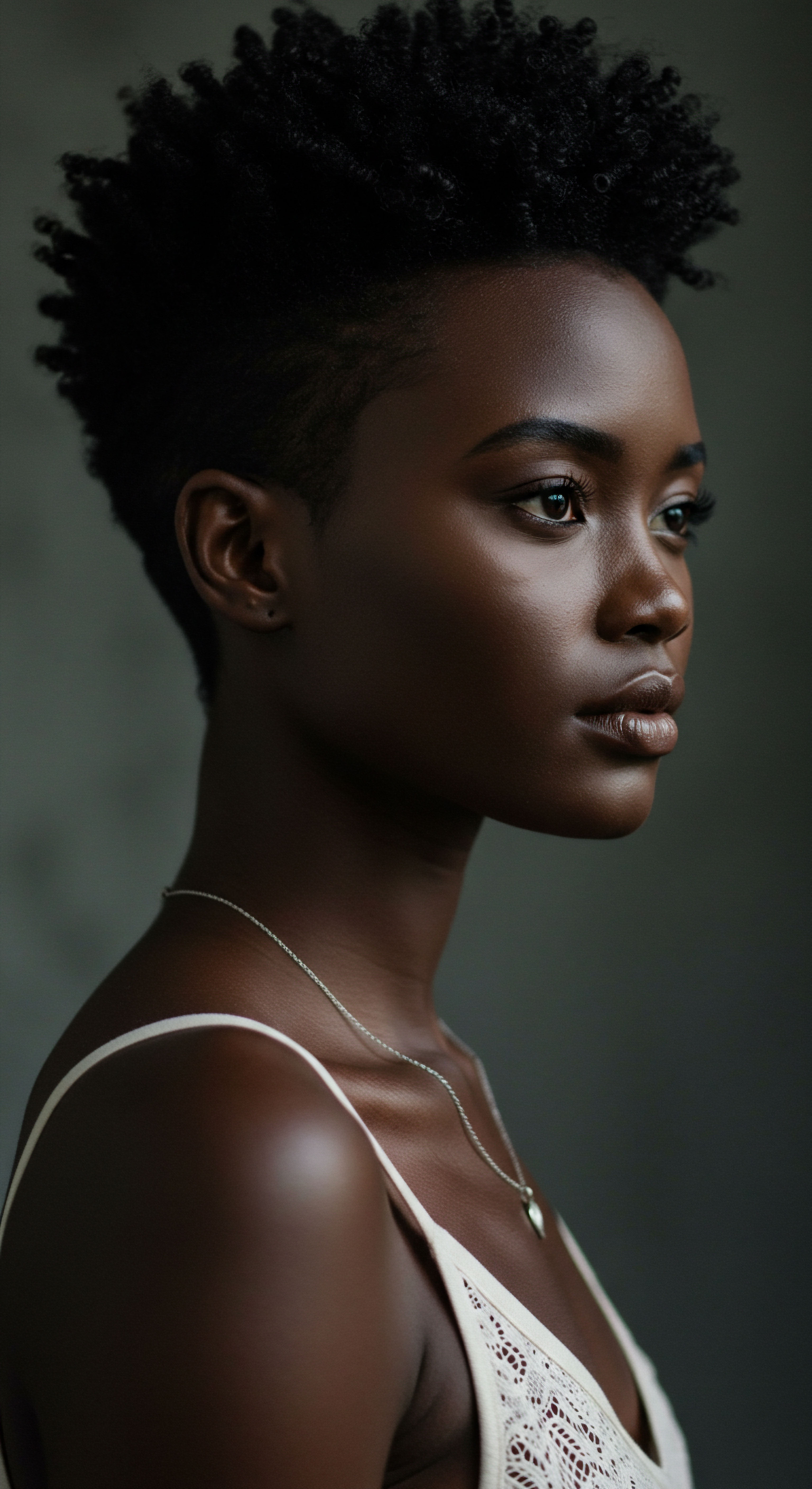
Understanding Hair’s Vulnerability
The very act of living, of moving through our days and even our nights, introduces elements that challenge hair’s integrity. For textured hair, this challenge is amplified. The outer layer of each hair strand, known as the cuticle, resembles overlapping scales, providing a protective shield for the inner shaft.
When hair rubs against rough surfaces, these delicate scales can lift, chip, or even break, leaving the hair vulnerable to damage, frizz, and eventual breakage. This is particularly true for wavy or curly hair, which presents more points of contact for friction.
Consider the hours spent in slumber. As one shifts and turns through the night, hair constantly brushes against pillowcases. A typical person may change sleeping positions up to 40 times each night, creating repeated friction between hair and bedding.
This continuous mechanical stress, especially against absorbent and coarse materials like cotton, can significantly compromise the hair’s delicate cuticle layer. This physical interaction not only leads to breakage but also strips the hair of its essential moisture, contributing to dryness and a lackluster appearance upon waking.
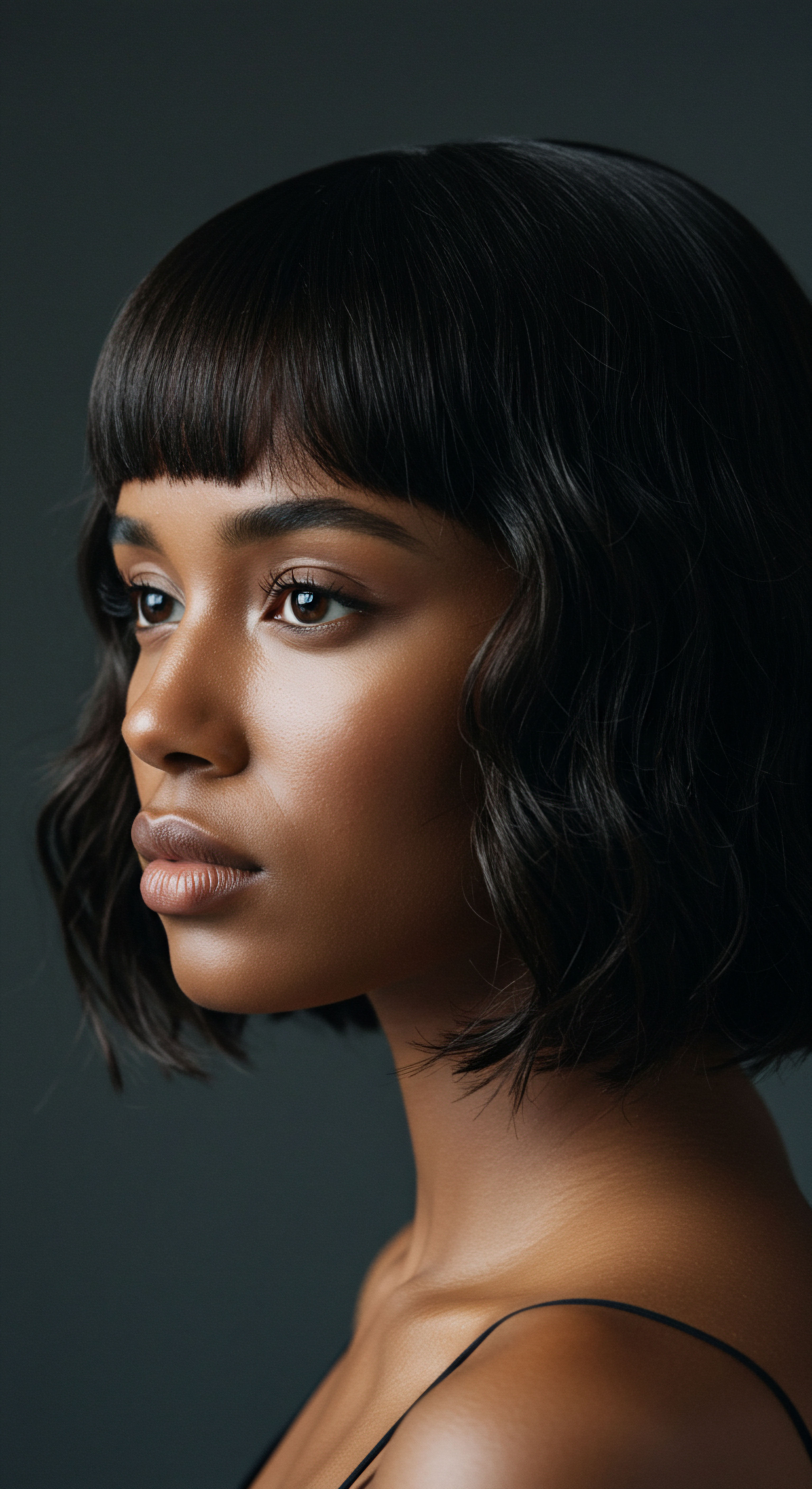
Why Does Friction Harm Hair?
The science of tribology, the study of friction, lubrication, and wear, helps us grasp the mechanical forces at play. Hair fibers, when sliding against a surface, experience frictional forces that can alter their surface topography. Studies investigating hair-to-fiber contacts show that sustained rubbing can lead to cuticle lifting and wear. For textured hair, where the natural curl pattern already creates points of contact within the hair itself, external friction exacerbates these issues, accelerating damage and contributing to phenomena like split ends and tangling.
The consequences of this nightly friction extend beyond mere cosmetic concerns. Over time, consistent mechanical damage can weaken the hair shaft, making it more prone to split ends and breakage. This compromises the hair’s ability to retain length and can hinder healthy growth. Therefore, the simple gesture of covering textured hair at night becomes a preventative measure, a silent guardian against the relentless, subtle forces of friction and moisture loss that occur during sleep.

Ritual
Stepping into the realm of practical wisdom, we consider the deliberate actions that shape our daily and nightly hair experiences. The practice of covering textured hair at night, often a quiet moment of care, is more than habit; it is a ritual born of understanding, a mindful gesture that protects and preserves. This simple act, performed with gentle intention, translates foundational knowledge of hair structure into tangible benefits for its ongoing vitality. It is a step that prepares hair for the morning, ensuring its resilience and beauty.
The primary benefit of covering textured hair at night centers on the reduction of friction. Traditional pillowcases, particularly those made of cotton, possess a rough texture that can snag and pull at delicate strands. As hair rubs against this surface during sleep, it creates mechanical stress, leading to frizz, tangles, and breakage.
A smooth, non-abrasive barrier, such as a satin or silk bonnet or pillowcase, allows hair to glide effortlessly, drastically reducing the likelihood of damage. This smooth surface minimizes friction, which in turn helps to protect the hair cuticles from lifting and chipping.
A smooth, non-abrasive barrier at night dramatically reduces friction, safeguarding textured hair from damage.
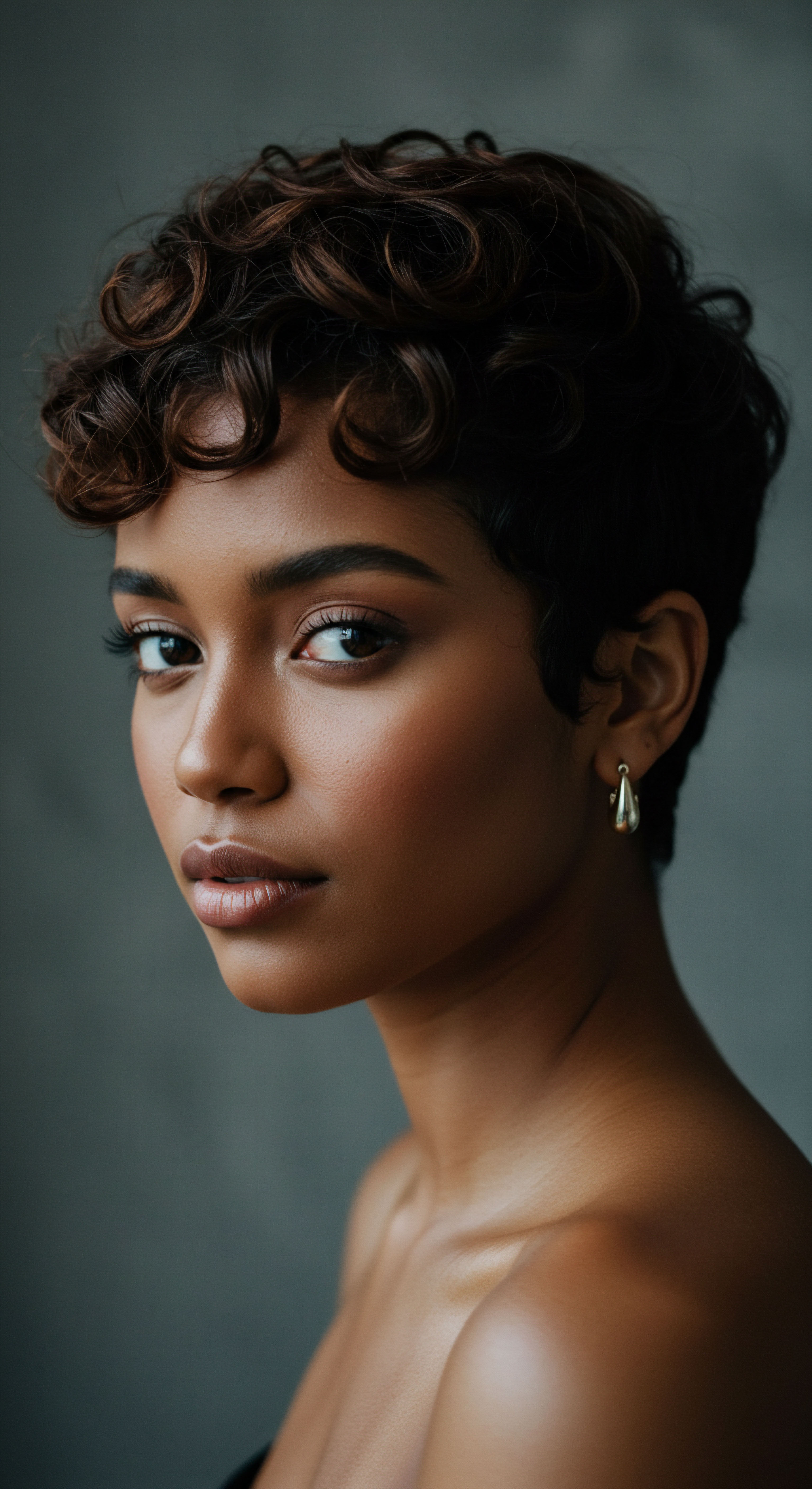
Preserving Moisture and Natural Oils
Textured hair, by its very nature, tends to be drier than other hair types, as its coiled structure can impede the even distribution of natural oils from the scalp down the hair shaft. Cotton pillowcases compound this issue by absorbing moisture and natural oils from the hair, leaving it dehydrated and more susceptible to damage. In contrast, materials like satin and silk are significantly less absorbent.
When textured hair is covered with these materials, its natural oils and any applied products remain on the hair, rather than being drawn into the fabric. This moisture retention is crucial for maintaining the hair’s hydration, suppleness, and overall health.
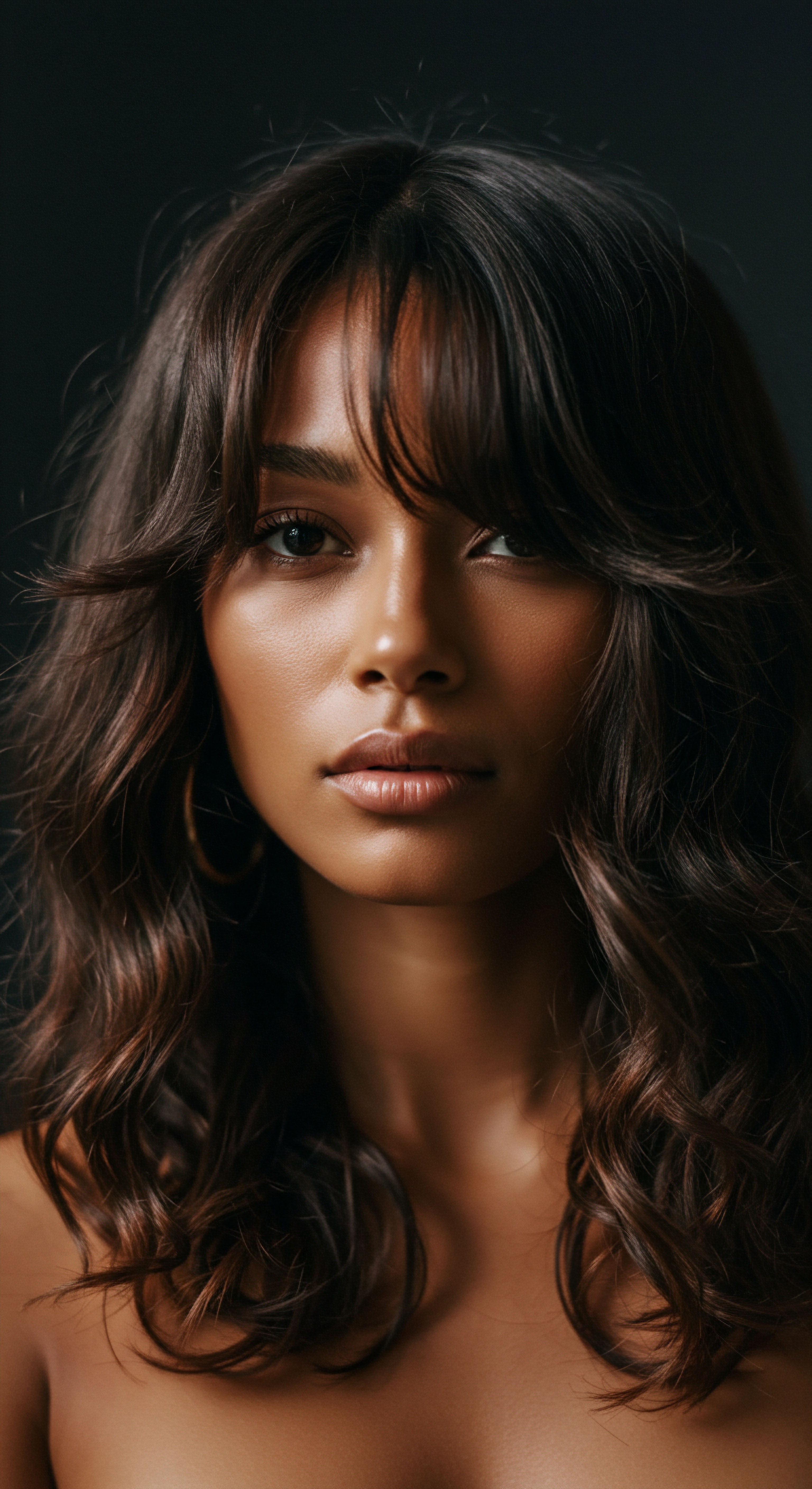
How Do Materials Affect Hair Hydration?
The choice of material for nighttime hair protection is paramount. Consider the difference between a conventional cotton pillowcase and one crafted from satin or silk.
- Cotton ❉ This widely used fabric is highly absorbent, much like a sponge. It readily soaks up moisture from the hair and scalp, leading to dryness and frizz, particularly for hair types already prone to dehydration. The fibers of cotton can also create micro-abrasions on the hair cuticle as one moves during sleep.
- Satin ❉ Often a blend of synthetic fibers, satin offers a smooth, slippery surface. This weave minimizes friction, allowing hair to glide without snagging. Satin is also less absorbent than cotton, helping hair retain its moisture and natural oils.
- Silk ❉ A natural protein fiber, silk provides an exceptionally smooth and gentle surface. Its tightly woven structure creates a virtually frictionless environment for hair. Silk absorbs less moisture than cotton, aiding in the preservation of hair’s natural hydration and applied products. It is also hypoallergenic, making it a gentle choice for sensitive scalps.
The benefits extend to the longevity of hairstyles. For those who invest time and effort into styling their textured hair, be it coils, twists, or braids, nighttime protection helps to preserve the style, reducing the need for daily restyling. This not only saves time but also minimizes the manipulation of hair, which can otherwise contribute to breakage over time. A preserved style means less heat application, less combing, and ultimately, less stress on the hair strands.
| Benefit Area Friction Reduction |
| Mechanism of Protection Smooth surface allows hair to glide, preventing snagging. |
| Impact on Hair Health Decreased breakage, fewer split ends, reduced frizz. |
| Benefit Area Moisture Retention |
| Mechanism of Protection Less absorbent materials keep natural oils and products on hair. |
| Impact on Hair Health Improved hydration, softness, and elasticity. |
| Benefit Area Hairstyle Preservation |
| Mechanism of Protection Hair remains contained, minimizing disruption during sleep. |
| Impact on Hair Health Extends style longevity, reduces need for daily restyling and manipulation. |
| Benefit Area Scalp Comfort |
| Mechanism of Protection Protection from environmental elements, aids in oil distribution. |
| Impact on Hair Health Supports a healthy scalp environment, reducing dryness and irritation. |
| Benefit Area Choosing the right nighttime hair covering significantly contributes to overall hair health and manageability. |
Beyond the physical aspects, there is a quiet comfort found in this nightly practice. It is a moment of self-care, a gentle act that prepares not just the hair, but also the spirit, for restful slumber. The softness of the chosen fabric against the skin, the feeling of hair safely tucked away, all contribute to a sense of peace that extends beyond the tangible benefits for the strands themselves.
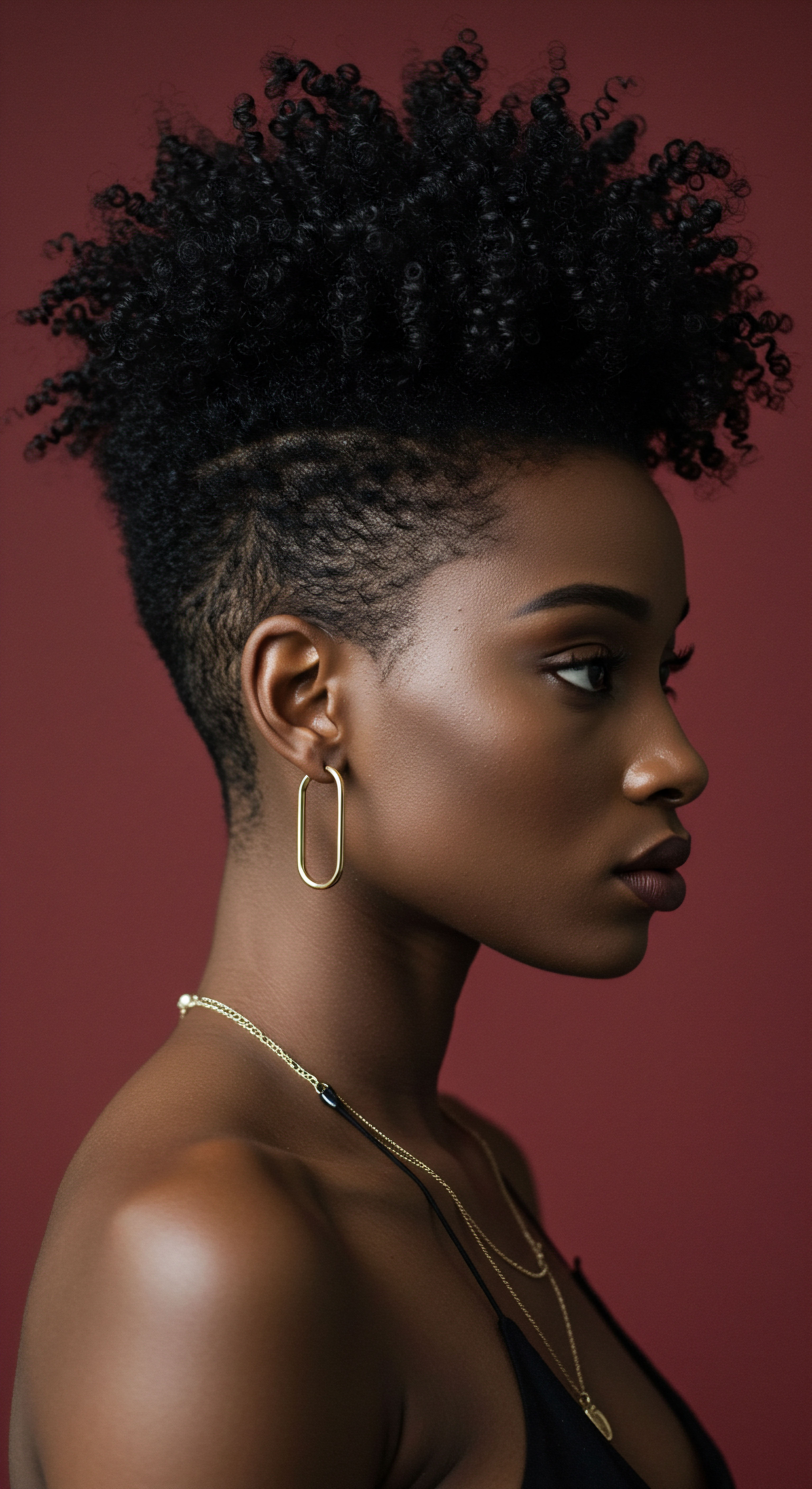
Relay
A deeper, reflective sub-question now guides our thoughts ❉ how does the nightly covering of textured hair resonate across the complex interplay of biological realities, cultural expressions, and personal well-being? The answer unearths layers of insight, revealing that this seemingly simple practice is a nexus where science, heritage, and individual experience converge. It is an invitation to consider the profound implications of an act often performed in quiet solitude, yet one that speaks volumes about care, identity, and resilience.
The mechanical benefits of covering textured hair at night are well-documented in contemporary hair science. The smooth surfaces of materials like silk and satin demonstrably reduce friction. A study published in the Journal of Cosmetic Science found that certain polymeric pretreatments, which provide a smoother hair surface, can reduce hair breakage by as much as 76% when hair is subjected to combing after thermal exposure. While this study focused on thermal damage, the principle of reduced friction translating to reduced breakage is directly applicable to the nightly rubbing against pillowcases.
Dr. Alicia Mendez, a trichologist at the Austin Hair Research Center, notes that switching to silk or satin materials can reduce friction by up to 43% during sleep, leading to a remarkable improvement in hair condition and moisture retention. This quantifiable reduction in mechanical stress directly translates to less cuticle damage, fewer split ends, and ultimately, stronger, longer hair.
Covering textured hair at night offers quantifiable benefits, reducing friction and preserving hair’s structural integrity.
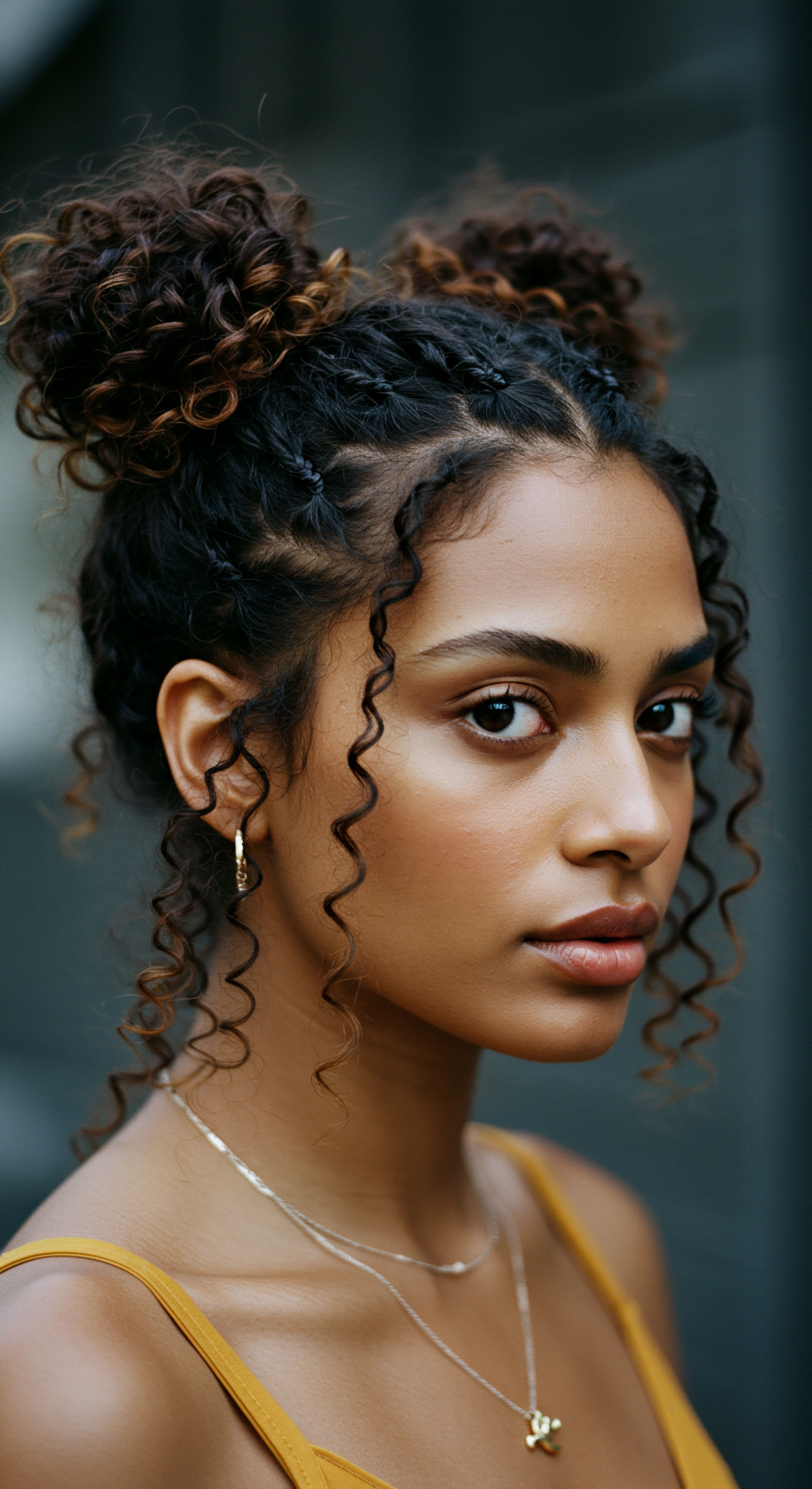
The Physiological and Environmental Impact
Beyond the direct mechanical protection, covering hair at night influences the hair’s physiological state and its interaction with the immediate sleep environment.
- Temperature Regulation ❉ A sleep cap can help maintain a more consistent temperature around the scalp. Some sources suggest that providing warmth to the scalp may increase the production of natural oils, thereby supporting hair growth. While direct evidence linking scalp warmth from coverings to increased oil production is less robust than the friction and moisture benefits, it speaks to a broader understanding of scalp health as a foundation for hair vitality.
- Microbial Environment ❉ A damp scalp can foster microbial growth. While coverings can retain moisture, selecting breathable materials and ensuring hair is dry before covering becomes crucial to prevent an overly humid environment that might counteract other benefits. This highlights the importance of thoughtful practice alongside the chosen accessory.
- Product Retention ❉ When hair is covered, topical treatments like leave-in conditioners, oils, or overnight masks have a more undisturbed environment to absorb. Since less product is absorbed by the pillowcase, more remains on the hair strands, allowing for deeper penetration and more effective conditioning. This optimizes the investment in hair care products, ensuring their active ingredients work as intended.
The protective qualities extend to minimizing tangles and knots, which are a significant source of breakage for textured hair. As individuals move during sleep, uncovered hair can become a tangled mess, requiring aggressive detangling in the morning. This often leads to mechanical damage. By containing the hair, a bonnet or scarf prevents this nocturnal agitation, allowing one to wake with more manageable, less compromised strands.
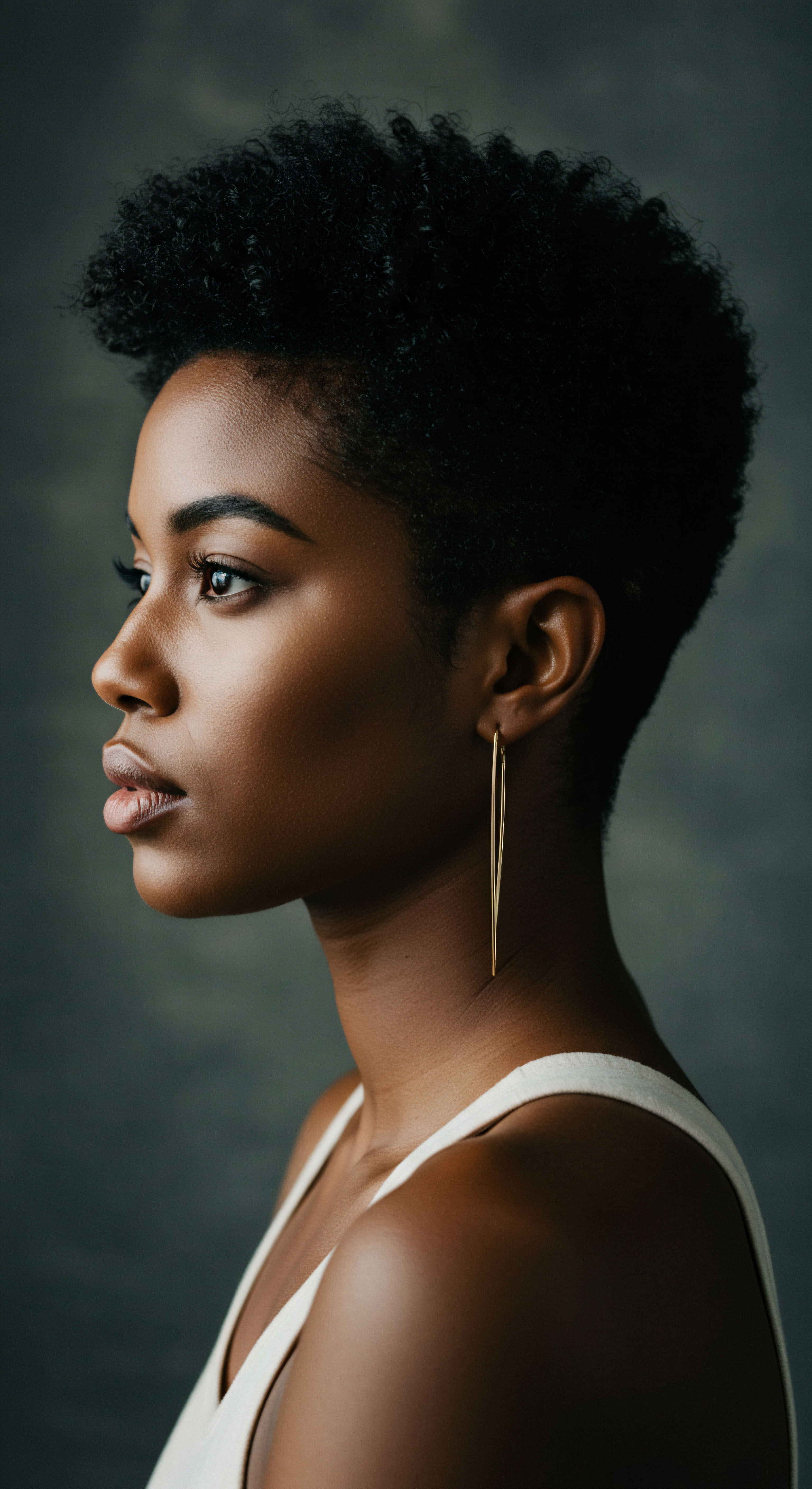
Cultural Significance and Identity
The practice of covering hair, particularly for Black women, transcends purely practical benefits, carrying profound cultural and historical weight. Headwraps and other hair coverings have been integral to African cultures for centuries, serving not only as adornment but also as symbols of social status, marital status, age, and modesty. During the era of slavery in the United States, enslaved Black women defiantly preserved their cultural identities through the act of wrapping their hair, transforming headwraps into potent symbols of strength and resistance against oppressive conditions, even when laws sought to enforce hair covering to signify inferior status.
This historical context underscores that for many, covering hair at night is not merely about preventing frizz or breakage; it is a continuation of ancestral practices, a connection to heritage, and an affirmation of identity. It is a self-care ritual passed down through generations, often from mothers to daughters, reinforcing a sense of community and shared experience. Mariette Williams, writing for Sleep.com, shares that for many Black women, a hair wrap routine also honors childhood traditions, affirms their need for self-care, and improves their sleep, as securing their hair leads to better rest.
This cultural lens adds a layer of depth to the scientific benefits. The psychological comfort and sense of self-respect derived from this ritual can contribute to overall well-being, which in turn can indirectly support hair health by reducing stress. Chronic stress, for instance, has been linked to various forms of hair loss. Thus, the holistic benefits extend beyond the physical, encompassing emotional and cultural dimensions that contribute to a more profound sense of hair wellness.

Reflection
As the soft light of morning touches the horizon, a quiet assurance often accompanies the unveiling of hair carefully protected through the night. This daily moment, steeped in personal care and a quiet connection to enduring traditions, speaks volumes about the benefits of covering textured hair before sleep. It is a practice that gently reconciles the demands of modern life with the wisdom of generations, offering not just a shield against damage but a deeper affirmation of self and heritage.
The silky embrace of a bonnet or scarf, a simple act of foresight, yields a wealth of benefits, from preserving delicate strands against the nightly dance of friction to safeguarding essential moisture. Each morning reveals not just a refreshed style, but a renewed connection to the inherent strength and beauty of textured hair, patiently nurtured through the quiet hours of rest.

References
- Healthline. (2021). Satin Pillowcases Benefits for Hair and Skin.
- The Surprising Benefits of Sleeping on a Satin Pillowcase for Healthier Hair and Skin. (2024).
- Obé Headwear. (2024). Significance of headwraps Hair care.
- Jewish Head Coverings.
- I stopped using cotton pillowcases and reduced hair breakage by 43% (what my hairstylist noticed after 2 weeks). (2025).
- PULSE Magazine. (2022). Cultural Head Coverings.
- Open Research Online. Friction and wear of human hair fibres.
- Alter ego. (2025). The Religious, Spiritual, and Cultural Global History of Hats and Headwear.
- A Healthier Michigan. (2024). The Benefits of Silk Pillowcases and Accessories for Your Hair.
- Mikvah.org – Mivtza Taharas Hamishpacha. Meaning Of Hair Covering.
- Clinikally. (2023). 10 Effective Ways to Protect Your Hair While You Sleep.
- Manta. (2024). Unlocking Healthy Hair Secrets The Power of Silk Accessories Revealed!.
- Chapellerie Traclet. Why Wear a Sleep Cap The Unsuspected Benefits.
- Dtex Homes. (2025). Which Pillowcase Is Better for Your Hair?.
- The Ultimate Beauty Sleep ❉ Benefits of Sleeping with a Silk Eye Mask and Silk Hair Ties. (2025).
- Stylist. How to protect your hair and prevent breakage while you sleep.
- Curldo. (2024). The Benefits of Using a Sleep Bonnet for Curly Hair.
- Esme Luxury. (2024). Is Wrapping Your Hair at Night Good?.
- Benefits and harms of covering the head while sleeping.
- Katherine Haircare. (2022). Historical Hair Care Grew My Hair to Hip Length! Here’s How.
- Esme Luxury. (2024). What Are the Sleeping Benefits of a Silk Hair Wrap?.
- Fashion Journal. (2024). Are silk pillowcases worth it? Three hairdressers weigh in.
- Clinikally. (2024). Impact of Sleep Deprivation on Hair Health.
- UKRI gateway. Tribology of Wet Hair.
- O So Curly. (2024). The Benefits of Satin Pillowcases for Curly Hair.
- Slipssy. (2025). Slipssy’s First-Night Effect ❉ How Reducing Friction Transforms Your Hair Overnight.
- Sleep.com. (2021). How a Hair Wrap Routine Protects More Than Just My Hair.
- Clinikally. (2022). How to Give Yourself Healthy Hair While You Sleep.
- Rossano Ferretti Parma. The Truth About Sleeping with Wet Hair.
- Clinikally. (2024). Overnight Hair Oiling Benefits ❉ Unlocking the Secrets, Benefits, and Precautions.
- Historical Perspectives on Hair Care and Common Styling Practices in Black Women. (2025).
- I Love Riccio. How not to damage curly hair at night.
- The effect of various cosmetic pretreatments on protecting hair from thermal damage by hot flat ironing.
- PCS Instruments. (2023). Bridging Biology and Friction ❉ The World of Biotribology.
- British Association of Dermatologists. Caring for Afro-textured hair.
- Amerisleep. (2024). Benefits of Sleeping in a Bonnet ❉ Why You Should Do It.
- DiStefano Hair Restoration Center. (2025). Does Sleep Affect Hair Health?.
- L’Oreal Paris. 11 Ways To Protect Your Hair While You Sleep.
- PMC. (2021). Techniques Used for Hair Style Maintenance while Sleeping May Be a Risk Factor for Traction Alopecia.
- Root Awakening. (2024). Textured Hair Care Through the Decades ❉ The 1940s – War, Work, and Waves.
- Curl Maven. How I Protect my Curly Hair at Night.
- ResearchGate. (2024). Tribological and Mechanical Properties of Brazilian Hair.
- MDPI. The Genomic Variation in Textured Hair ❉ Implications in Developing a Holistic Hair Care Routine.
- EBSCO Research Starters. Afro-textured hair.
- Royal Alberta Museum. (2020). From Rags, to Ringlets.
- Tribology in Industry. (2021). Mild Steel Tribology for Circular Economy of Textile Industries.
- Contemporary African-American Hair Care Practices. (2015).